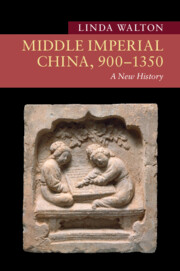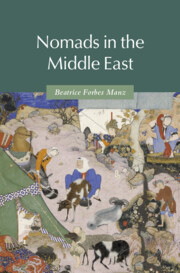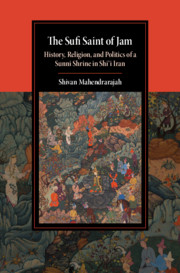Refine search
Actions for selected content:
10 results

Middle Imperial China, 900–1350
- A New History
-
- Published online:
- 20 July 2023
- Print publication:
- 03 August 2023
2 - Ethos of the “Slave-Soldiers” Regime
-
- Book:
- The Mamluk Sultanate
- Published online:
- 05 May 2022
- Print publication:
- 26 May 2022, pp 53-79
-
- Chapter
- Export citation
5 - Mongol Conquest and Rule
-
- Book:
- Nomads in the Middle East
- Published online:
- 12 November 2021
- Print publication:
- 02 December 2021, pp 109-138
-
- Chapter
- Export citation

Nomads in the Middle East
-
- Published online:
- 12 November 2021
- Print publication:
- 02 December 2021

The Sufi Saint of Jam
- History, Religion, and Politics of a Sunni Shrine in Shi'i Iran
-
- Published online:
- 07 May 2021
- Print publication:
- 08 April 2021
5 - Crisis
- from Part II - History
-
- Book:
- Islam, Authoritarianism, and Underdevelopment
- Published online:
- 18 June 2019
- Print publication:
- 01 August 2019, pp 118-163
-
- Chapter
- Export citation
Part II - History
-
- Book:
- Islam, Authoritarianism, and Underdevelopment
- Published online:
- 18 June 2019
- Print publication:
- 01 August 2019, pp 67-236
-
- Chapter
- Export citation
Part I - Mapping Shakespeare’s World
-
-
- Book:
- The Cambridge Guide to the Worlds of Shakespeare
- Published online:
- 17 August 2019
- Print publication:
- 21 January 2016, pp 1-66
-
- Chapter
- Export citation
3 - Geographical Myths
- from Part I - Mapping Shakespeare’s World
-
-
- Book:
- The Cambridge Guide to the Worlds of Shakespeare
- Published online:
- 17 August 2019
- Print publication:
- 21 January 2016, pp 24-29
-
- Chapter
- Export citation
